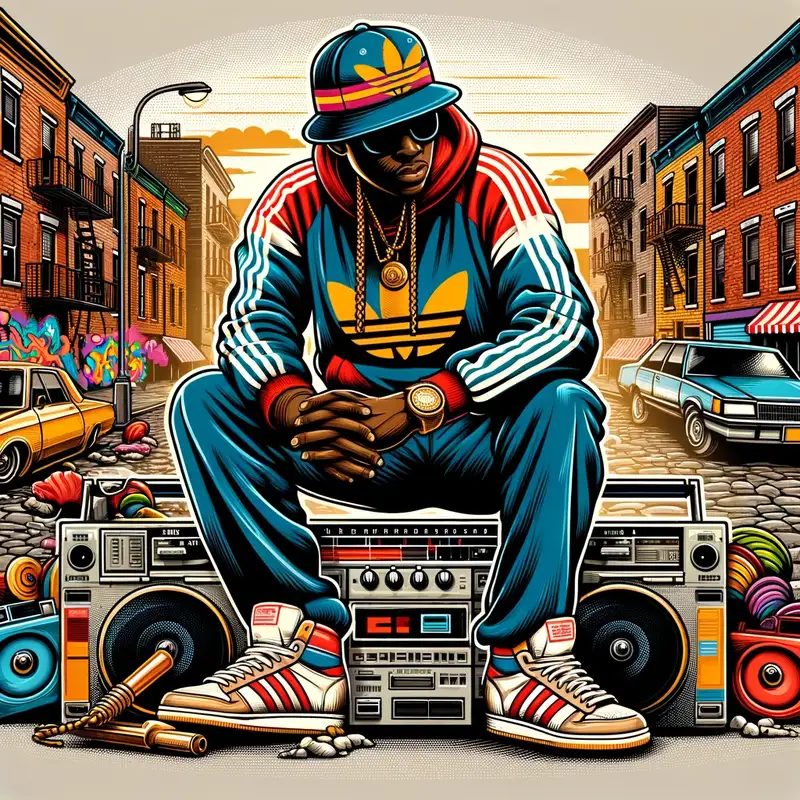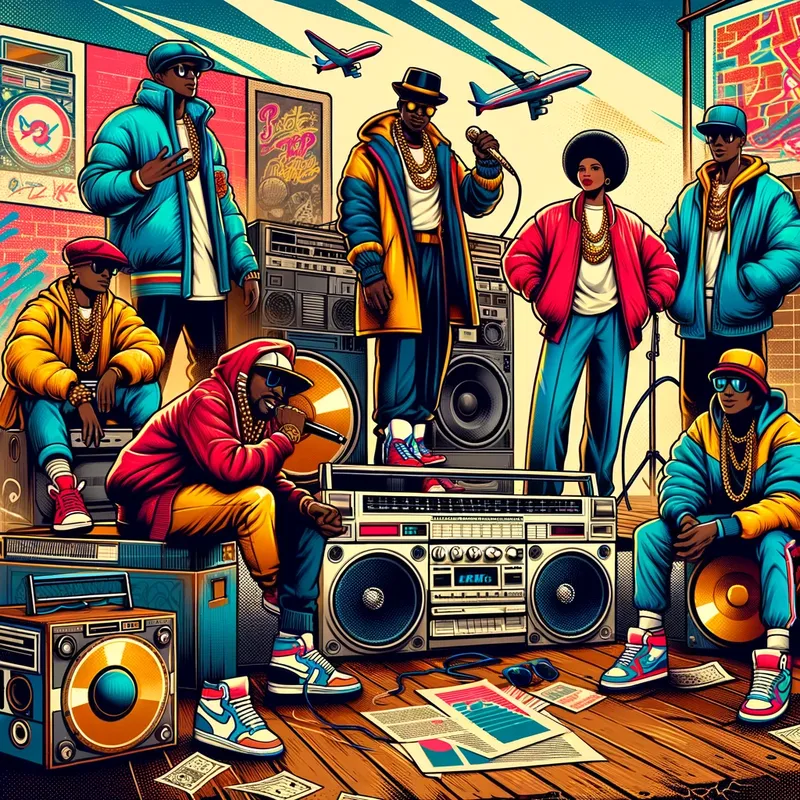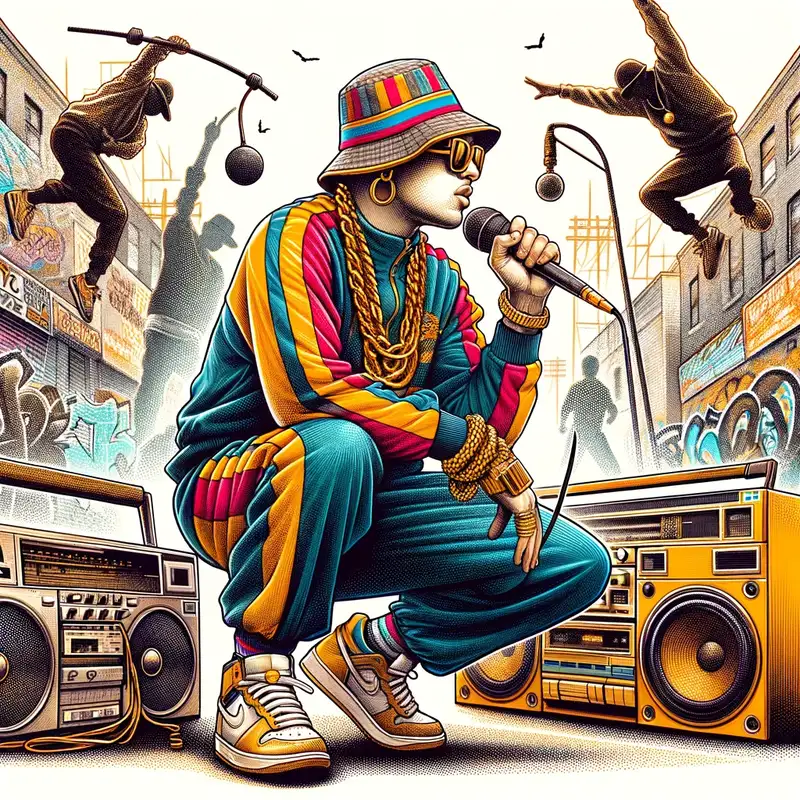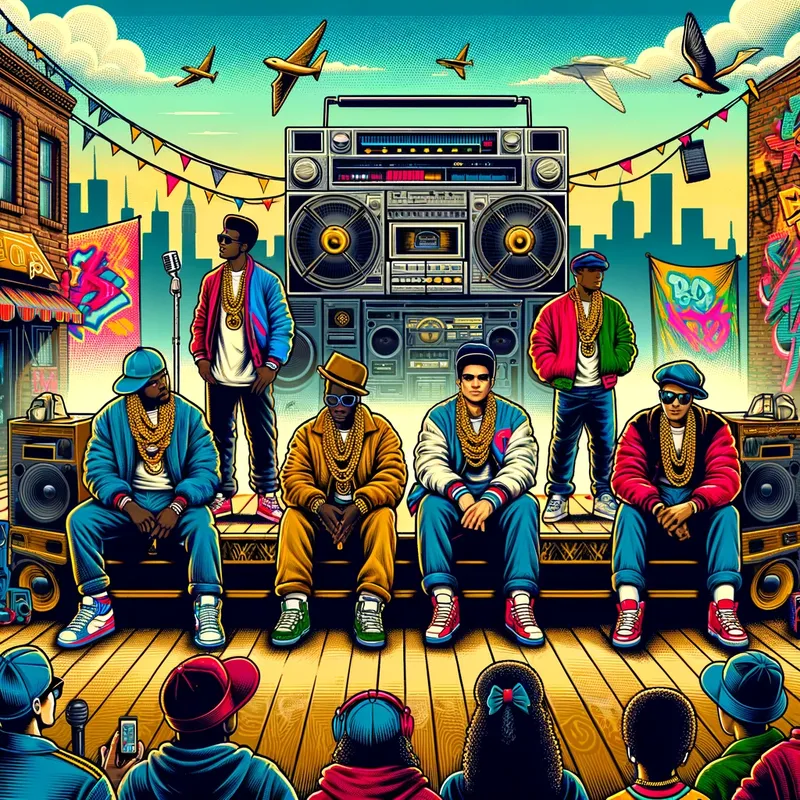Old School Hip Hop

Table of Contents
The Birth of a Movement
So, here’s the deal: Hip-hop didn’t just pop up overnight. The 1970s, New York City – The Bronx, to be exact – is where it all kicked off.
DJ Kool Herc, Grandmaster Flash, B Afrika Bambaataa were the early pioneers. These artists used turntables, not just to play records but to CREATE a new sound.
The “breaks” in funk and soul records became the beats over which MCs would rhyme. By the way, MC stands for Master of Ceremonies or Microphone Controller, depending on who you ask.
The Four Elements
If you wanna talk Old School hip-hop, you gotta know the culture. And by that, I mean the Four Elements: DJing, MCing, Breakdancing, and Graffiti Art.
DJing
The DJ (Disc Jockey) is the backbone of the hip-hop scene. Old School DJs like Grandmaster Flash used to “scratch” records to create fresh rhythms. And don’t forget beat-juggling, where the DJ would mix different beats to create an entirely new track.
MCing
Rhyming over the DJ’s beats, that’s what an MC does. The early MCs didn’t just spit rhymes; they told stories, led crowd chants, and went into lyrical battles. We’re talking about artists like Rakim, Big Daddy Kane, and KRS-One, who were poets of the street.
Breakdancing
You’ve seen those guys spinning on their heads or doing the windmill, right? That’s breakdancing, a style of dance that originated as part of the hip-hop movement.
Graffiti Art
Graffiti art gave a face to the sounds and beats of the hip-hop world. Tags and masterpieces on walls, trains, and anywhere they could find a spot – it was all part of the movement.
The Golden Era
Skip ahead to the late ’80s and early ’90s, and you’ve got what many consider the “Golden Era” of hip-hop. Groups like A Tribe Called Quest, De La Soul, and Wu-Tang Clan brought in a mix of jazz, funk, and soul into their beats. Lyrically, they were tackling social issues, politics, and life in the ‘hood.
The Influence
Old School hip-hop is a movement that shaped what we see today. Whether it’s fashion, with those baggy pants and baseball caps, or language, Old School’s left its mark. And let’s not forget its influence on other genres – R&B, rock, and even country.
So why does Old School still matter? Simple: it’s the foundation. Without it, there’d be no Jay-Z, no Kendrick Lamar, no Nicki Minaj. But more importantly, it gave a voice to people and communities who were often ignored.


